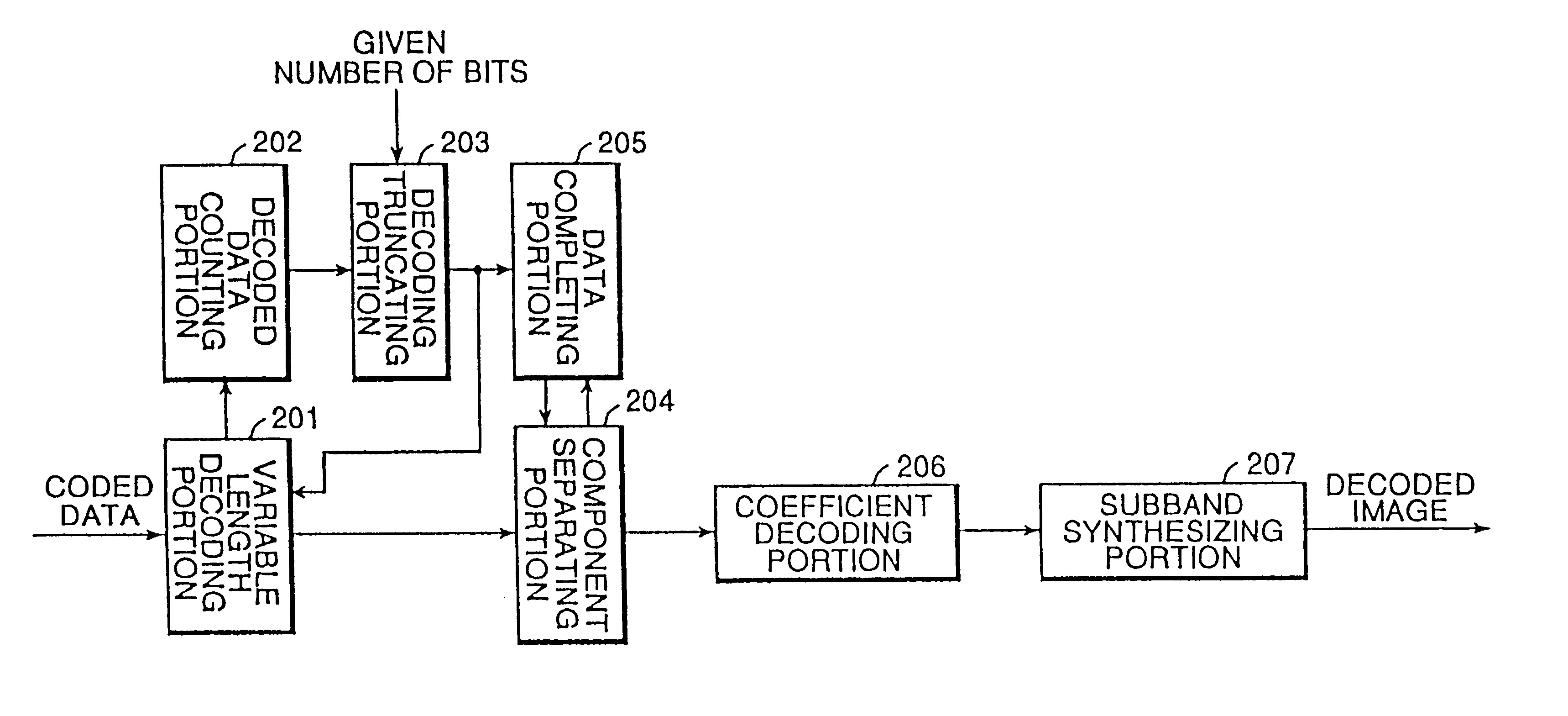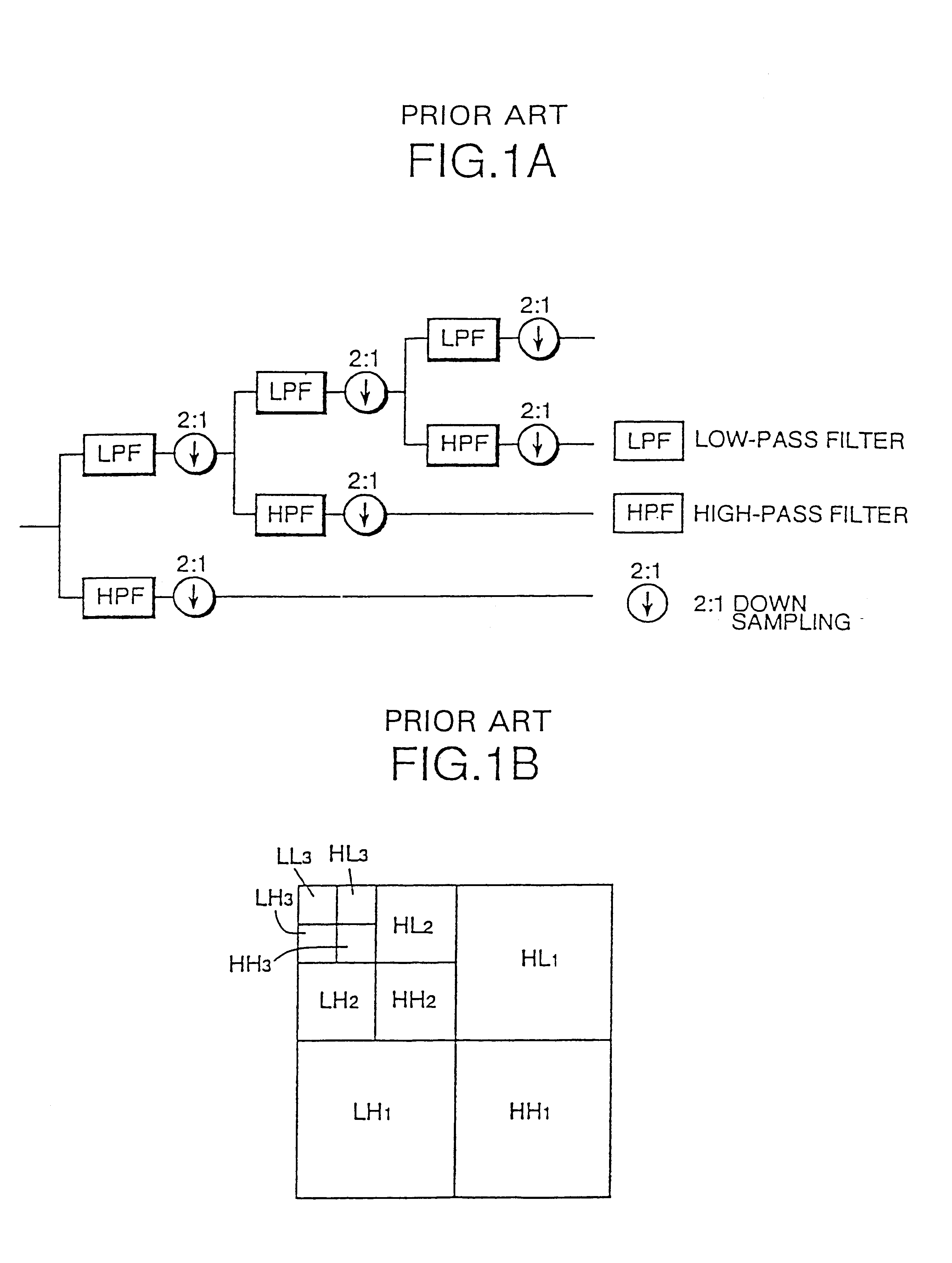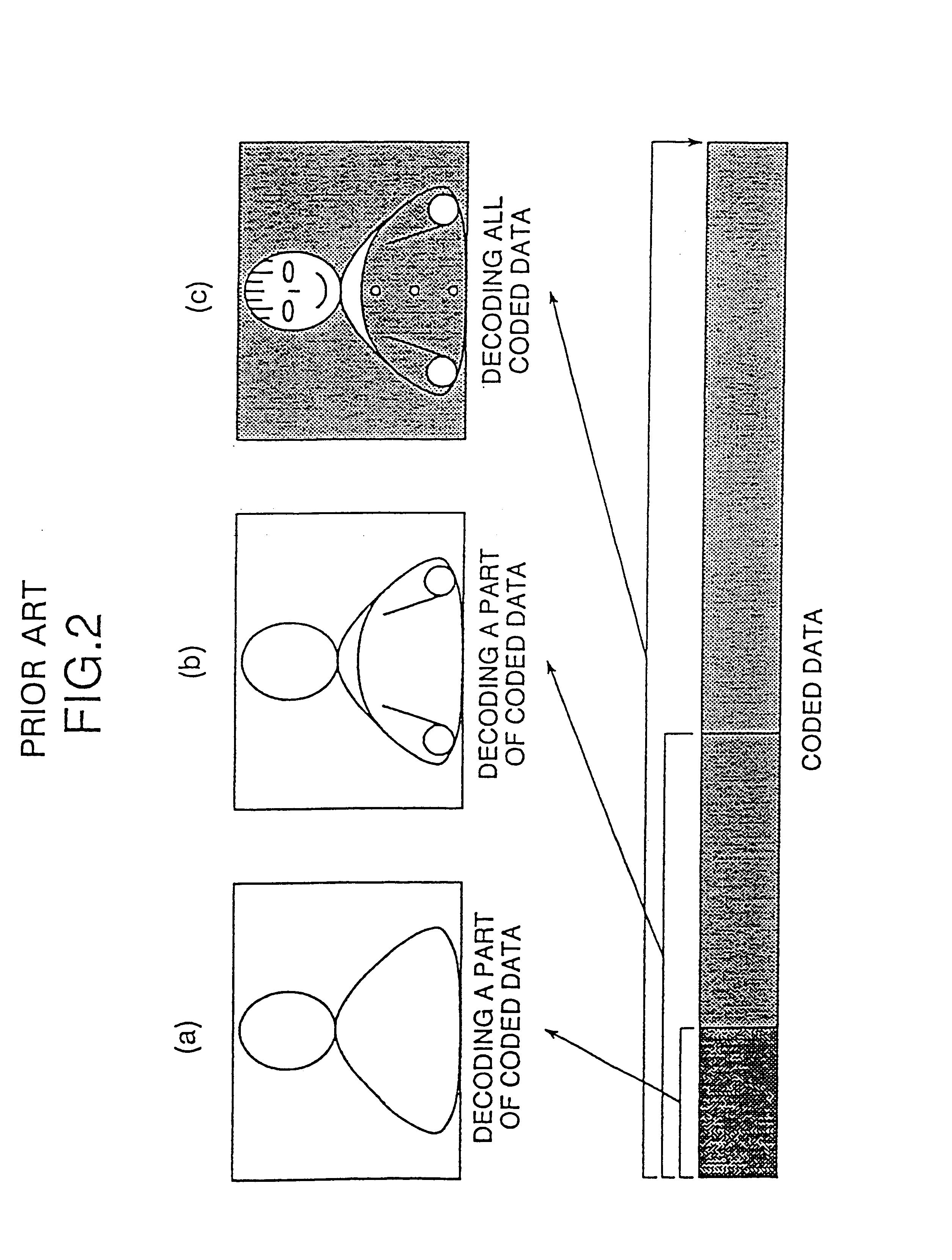Image decoding device for decoding a hierarchically coded image
a hierarchical coded image and image decoding technology, applied in the field of digital video processing, can solve the problems of not being able to adapt to an input image composed of different sizes of components in format, unable to meet the needs of users, so as to improve the subjective image quality of the image
- Summary
- Abstract
- Description
- Claims
- Application Information
AI Technical Summary
Benefits of technology
Problems solved by technology
Method used
Image
Examples
first embodiment
This makes it possible to conduct variable-length coding of the coded coefficient data by, e.g., an arithmetic coding method besides the Huffman coding method. According to the present invention, it is also possible to conduct rearrangement of the coded coefficient data after variable-length coding as the prior art device does. The operation of the first embodiment is described below with an input image composed of three components Y (luminance), U (chrominance) and V (chrominance), which is the same as that used in the prior art device. In this embodiment, these components have the same resolution, i.e., the same image sizes.
An integrated component unit may be prepared from coefficient-coded data by combining elements Y, U and V. The following example is an integrated component unit that is prepared of subbands of Y, U and V.
FIG. 9 shows coefficients of subband images obtained through performing the subband-decomposition of respective image components Y, U and V three times ((a), (...
second embodiment
the present invention is similar in construction and function to the first embodiment except for the operation of the transfer-order deciding and rearranging portion 204 (step of separating an integrated component unit into respective components and writing separated data in corresponding subbands in a memory). Therefore, the further description is omitted.
In the second embodiment of the present invention, it is possible to give coded data a hierarchical structure even if components of an image have different sizes. The decoding side can decode entire decoded data and can also obtain an entire reproduced image from a part of the coded data.
Although the second embodiment has been described with only an image having components whose horizontal and vertical size ratio is 2:1:1, it can treat other size ratios of image components in the similar manner as described above.
third embodiment
the present invention is adaptable to the case of processing image components being different in size and decomposed into different numbers of decomposition levels by the subband decomposing portion 101 of FIG. 7. This embodiment of the present invention is similar to the first embodiment except for the operation of the transfer-order deciding and rearranging portion 104 (step of outputting an integrated component unit). Therefore, the same portions are not explained further. Only the transfer-order deciding and rearranging portion 104 will be described below.
Referring to FIG. 21, this embodiment is described by way of example with an input image whose components U and V have horizontal and vertical lengths being one half of those of the component Y. A part designated by (1) of FIG. 21 shows the results of decomposing the component Y three times and the components U and V twice respectively. As the number of subbands of Y differs from that of U and V, the third embodiment cannot use...
PUM
 Login to View More
Login to View More Abstract
Description
Claims
Application Information
 Login to View More
Login to View More - R&D
- Intellectual Property
- Life Sciences
- Materials
- Tech Scout
- Unparalleled Data Quality
- Higher Quality Content
- 60% Fewer Hallucinations
Browse by: Latest US Patents, China's latest patents, Technical Efficacy Thesaurus, Application Domain, Technology Topic, Popular Technical Reports.
© 2025 PatSnap. All rights reserved.Legal|Privacy policy|Modern Slavery Act Transparency Statement|Sitemap|About US| Contact US: help@patsnap.com



